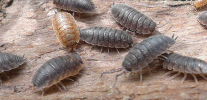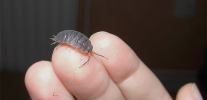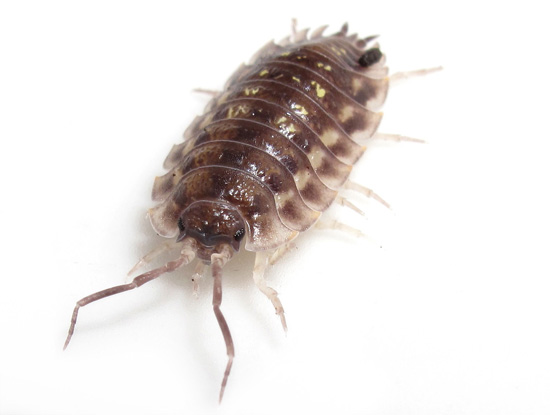
Generally speaking, there are more than 3,500 species of woodlice in the world, of which only a few dozen are found in our country. In the same apartments (for example, in bathrooms, toilets) you can find only two types:
- common armadillo lice;
- and also wood lice rough.
The fact is that an apartment or a private house is still not the most suitable habitat for these creatures, and therefore only the most common and unpretentious species get accustomed here and more or less take root. In general, in Russian cities - outside the residential or business premises - one can find a much larger number of species of these interesting crustaceans.
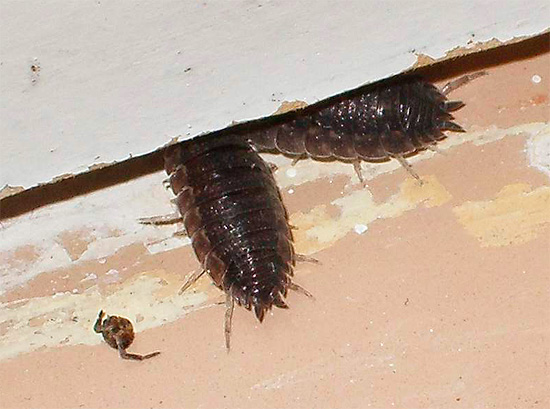
On a note
Most ordinary people believe that wood lice are insects. In fact, they are not insects at all, but belong to the suborder of crustaceans. All insects have only 3 pairs of legs, and the wood lice have much more, besides, there are also gills.
Scientists studying invertebrates often carry out research and analysis of the fauna of wood lice in various localities. According to the results of such studies, we can safely conclude that, under the conditions of cities in central Russia, they have already managed to form their own unique “set” of woodlice. Each of these species has its own distinctive features, interesting and distinguishing them from other arthropods.
However, we, city dwellers, are primarily interested in precisely those types of woodlice that are found in our apartments and houses. So let's "get acquainted" with them closer ...
Mockrill (Armadillidium vulgare), or armadillo lice
The mokritsa vulgaris (Armadillidium vulgare) is, one can say, the very well-known and very common type of woodlice throughout Russia. It is the armadillo lice that has a high shell and a characteristic dark body color.
The photographs below show adult woodlice:

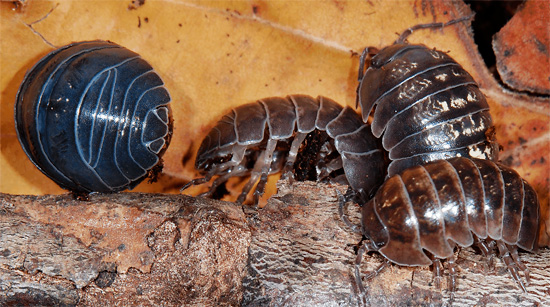
Directly in apartments, this type is quite rare, but in basements, wet cellars and heating routes is quite typical.In cities and towns, common woodlice are found most often in gardens, front gardens, parks, vacant lots, and roadsides. They are kept mainly under stones and various objects lying directly on the ground.
They feed on these small crustacean plants, both alive and decaying. In gardens and in the front gardens, this type of wood lice can cause damage to the plantings, damaging the flowers, but, fortunately, most often they choose weeds, thus proving to be useful human neighbors.
It is easy enough to distinguish the miniature "armadillo" from other relatives found in cities: its movements are slow, and at the slightest anxiety it collapses into a ball. An example is shown in the photo below:

It is interesting
It was the common armadillo lice after the accidental transportation from Europe to the USA that spread there in huge quantities, and today on the coast of California in some places there are sometimes more than 10,000 individuals per square meter.
Rough moss (Porcellio scaber)
Despite the prevalence of wood lice in the territory of Russia,Still, the most numerous and most commonly encountered species in living quarters is the so-called rough wood lice (Porcellio scaber, it is sometimes also called “burial wood lice”). Representatives of this species are very mobile, they run much faster than woodlice-armadillos, and easily move between the floors of apartment buildings (and sometimes there are ways to literally reach in hordes of apartments from damp attics in houses where the roof flows).
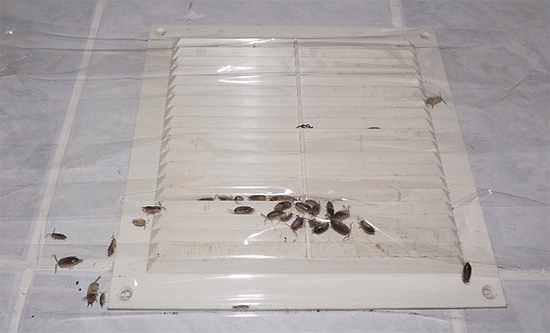
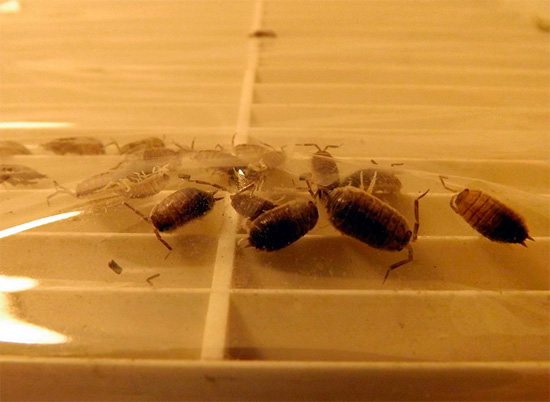
When caught, the rough wood lice does not curl up into a ball, but, on the contrary, bends and quickly moves with all its ten legs, trying to escape and escape.
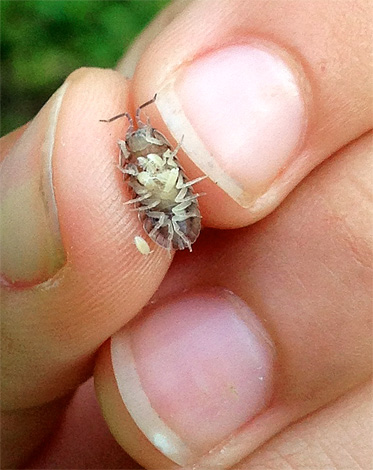
Its shell is soft and fairly flat, and the color varies greatly depending on the habitat. So, for example, rough wood lice that live in the southern regions have a light gray color with a pinkish tinge, in more northern cities they have a yellowish or reddish hue, and when moving to the east they become dark, sometimes almost black.
The photo shows a typical representative of rough lice:
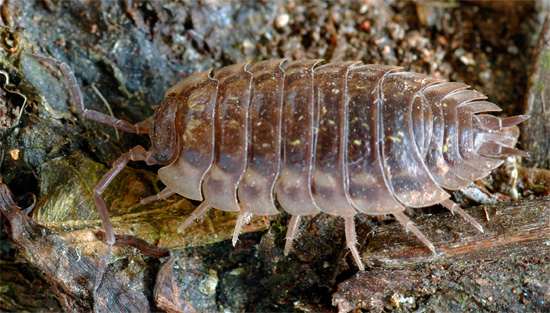
With the penetration into the houses and various buildings of a person, this species often turns into a pest.These small crustaceans can be dangerous for greenhouses, farms, greenhouses, gardens and orchards. In cellars and cellars, they often feed on vegetables and fruits stored here, and in warehouses they can damage agricultural products.
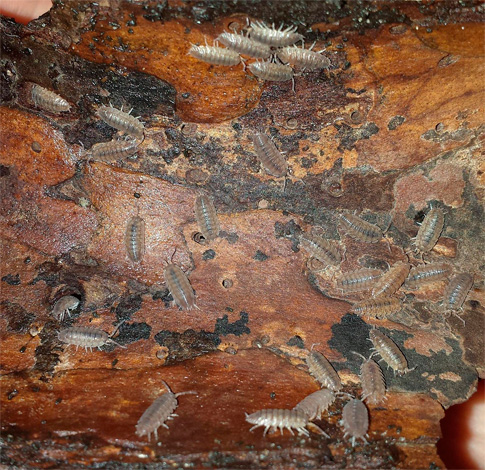
However, if you met such wood lice in the bathroom or toilet of your apartment, then you should not be especially afraid - they do not bite, do not spoil the interior items, and in general, are generally quite harmless. However, their appearance may indicate that somewhere nearby there is a damp room (attic, basement), from where they, in fact, crawl.
Trachelipus rathkei
This type of wood lice does not even have a generally recognized Russian-language name, but at the same time in many cities in central Russia is also quite common.
According to the conducted research, the abundance of representatives of this species is explained by the fact that they have an excellent ability to adapt to environmental conditions. In addition, as it turned out, the representatives of Trachelipus rathkei choose to live precisely those areas of cities where the buildings are the most dense.

These crustaceans are distinguished by their characteristic slightly flattened and strongly extended bottom shell, which complicates their capture by the fingers.In addition, the antennae of Trachelipus rathkei are rather long - so much so that they allow even young individuals to be distinguished from related species.
Trachelipus rathkei are distributed throughout the world, and in as large quantities as in Russia, are found in Europe, the USA, and Canada.
Scientists are very attracted by the strong variability in the sex ratio in different populations of these woodlice. In some cities, males dominate in the population, females in others - but experts still cannot find out the reasons for such fluctuations.
In the photo below you can see how the adult Trachelipus rathkei looks like:
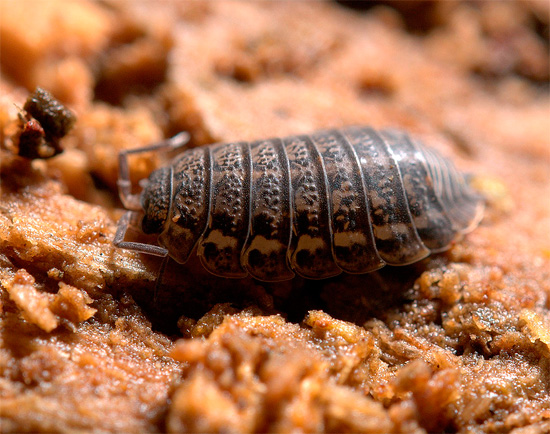
Porcellio spinicornis
Porcellio spinicornis is another well-known type of woodlice, widely distributed in Europe and a few years ago accidentally introduced into North America.
Porcellio spinicornis is characterized by the presence of two rows of yellow dots on the carapace of the shell, more or less distinctly expressed in different populations and in individual individuals. Another distinctive feature of this species is the antennae of three segments, which are long and rather strongly curved in different angles on each segment.
The picture clearly shows the yellow spots on the shell of Porcellio spinicornis:

It is interesting
Porcellio spinicornis is very much to places with the presence of limestone or lime.Most often this species is found near chalk pits, in foam concrete houses or in old churches with whitewashed walls.

Cylisticus convexus
The mokritsa Cylisticus convexus is known for having spread throughout the world in a relatively short time, but it cannot be called a typical inhabitant of urban buildings: Cylisticus convexus is almost never found in apartments. Individuals of this species prefer to settle on agricultural land and in various buildings such as barns, silos and currents.
This type of wood lice is well defined by prominent and rather long cers - protrusions at the end of the abdomen, similar to the antennae:

"Homemade" woodlice in other countries
In Europe and the Mediterranean countries, the list of typical "domestic" woodlice looks a little different than for Russia:
- The first place in terms of prevalence is occupied by the wood louse (battleship), which is characteristic of Russian dwellings as well as various outbuildings.
- But the second place is occupied by the famous desert woodlice Reaumur, considered, so to speak, the most land crustacean in the world, adapted to live in semi-deserts and deserts.This species is especially common in Lebanon, Israel, Egypt and Turkey - here it is found even in larger quantities than in the south of Russia there is a rough wood lice.
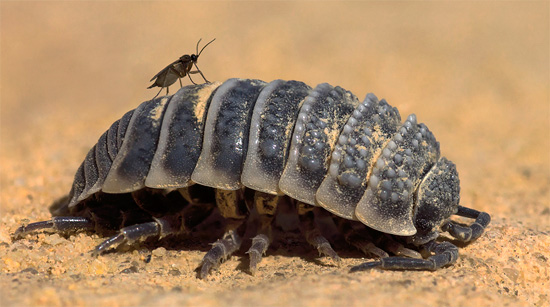
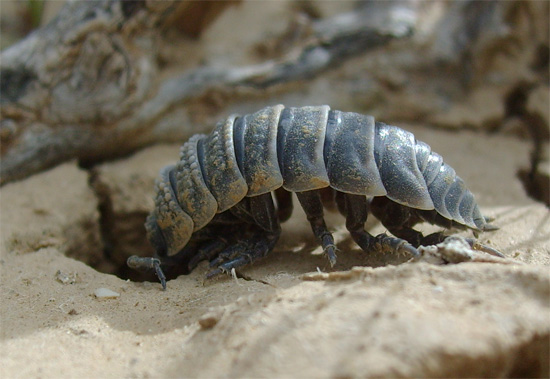
In tropical countries, much more species of wood lice live in apartments, but they differ little from their relatives, which are characteristic of central Russia. Even their size is not impressive - the largest representatives reach a length of about 3-4 cm, and only some giants grow to 5-6 cm.
Other arthropods, which are mistaken for woodlice in the house
The appearance of woodlice is so specific that in the conditions of our country it is very difficult to confuse them with any other guest in the apartment. Nevertheless, many owners of apartments and houses still “manage”.
For example, wood lice are sometimes called scales. True, this applies only to those people who very rarely saw wood lice in life, because these creatures are completely different from each other. It is enough to look once at the photographs of wood lice and silverfish to understand who is who:
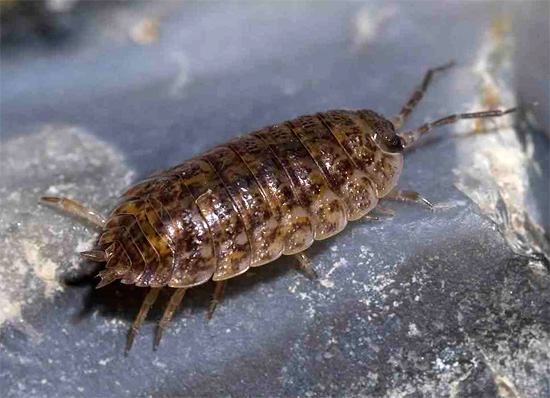
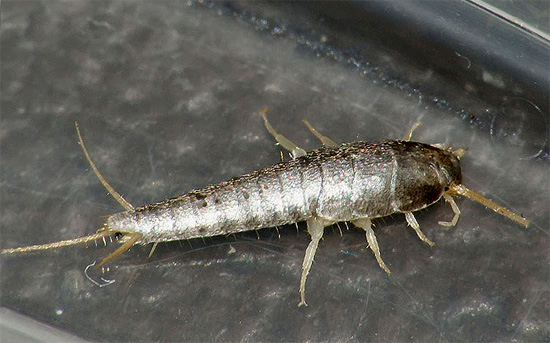
It is interesting
In the south of our country, in the cellars and basements, people often meet kivsyaks (the most common of them is the kymsyk of Crimea), which are also sometimes called woodlice.As in the situation with silverfish, the kitsyaks and woodlice differ so well that, having seen a number of these two creatures, it will be difficult to confuse them.
But in the tropics there are centipedes with hard shells, very similar to woodlice, but, nevertheless, having nothing in common with them:


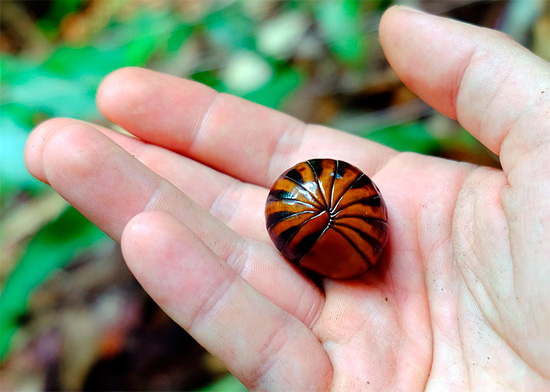
To distinguish these millipedes from the glomeris family from woodlice, you need to really know some of the features of the anatomy of each species.
For example, an armadillo lice can be confused with the millipede Glomeris marginata - these creatures look very similar. However, the centipede, unlike the woodlouse, is almost never found in residential buildings and human buildings, preferring moist forest floor and space under the stones.
Let's summarize a little.
On the territory of Russia in the apartment or any household building you can find mainly only two types of wood lice, which are easily recognizable:
- common wood lice;
- Wood lice rough.
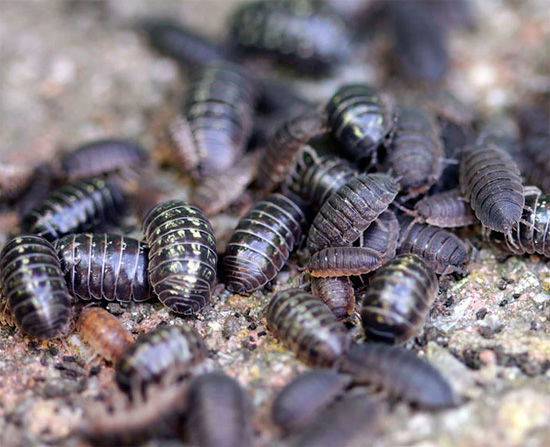
If these “guests” appeared in your apartment, then you need to immediately figure out where they come from into the room, as well as take measures to eliminate excessive moisture in their “abode”, until this dampness led to other serious problems (mold, rot, pests and parasites).
Interesting video: woodlice invasion into high-rise apartment apartments
What lice feed on and why dampness is so important for them ...

